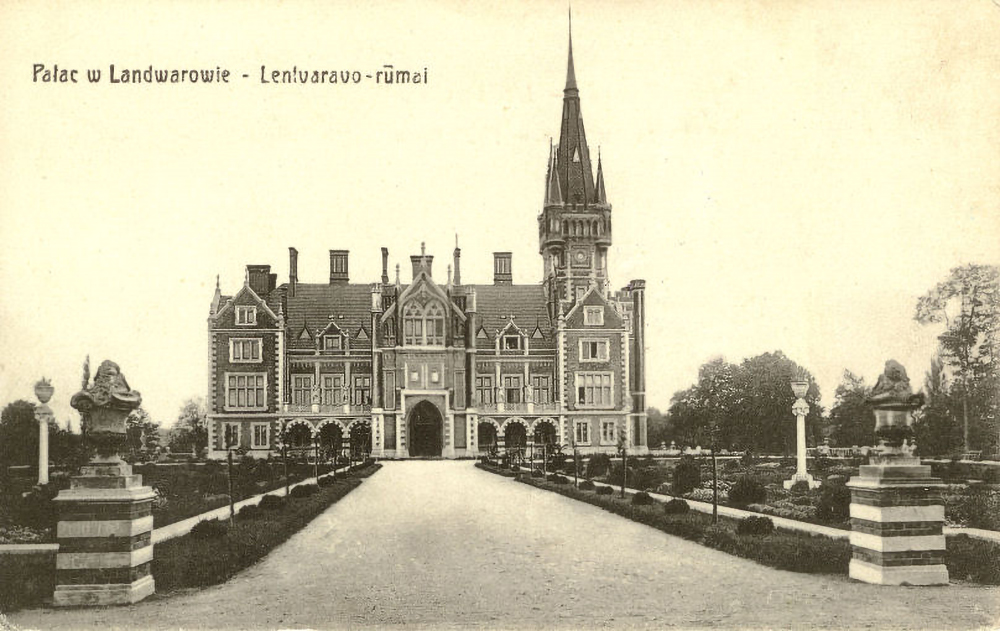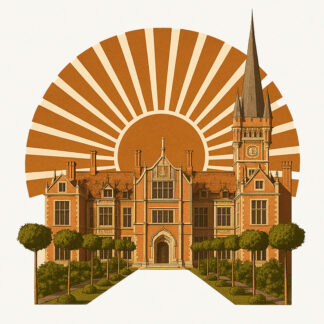Reviving the glory of Lentvaris Manor: power and generosity
During the times of nobility and aristocracy, generosity was considered a sign of wealth and power. Counts and other powerful people were expected to be philanthropic and benevolent towards the less fortunate members of society. They would often donate to charity, sponsor education, and invest in cultural institutions.
Generosity was not only a way to show off wealth and power but also a way to gain popularity and support among the common people. Counts and other powerful individuals would often organize large events, such as feasts and balls, and invite people from all walks of life. They would also distribute alms and gifts to those in need, such as the poor, the sick, and the elderly.
Count Vladislav Tiškevičius of Lentvaris, Lithuania, was one such example of a generous nobleman. He was known for his kindness and charity toward the people in his domain. He would give alms to anyone who asked, even to a swindler, without hesitation. Despite the fact that his generosity was sometimes exploited, he also engaged in purposeful charitable activities, such as founding the Vilnius Art and Science Museum Society, which aimed to collect and preserve as many works of art and science as possible in one place.
Generosity was not limited to just the nobility, however. Many wealthy merchants and entrepreneurs also engaged in philanthropic activities. They would often donate to local churches, sponsor schools, and invest in cultural institutions such as theaters and opera houses.
Today, the legacy of these generous individuals can still be seen in the cultural institutions and charities they support. Many museums, libraries, and universities owe their existence to the generous donations of wealthy individuals of the past.
From Tiškevičius to Soviet Era to modern renovation
The manor house, a symbol of wealth and power, has a long and storied history that has seen many of these grand estates fall into disrepair and neglect. Many manor houses have been turned into museums, owned by state institutions, and some have been heavily landscaped or left to ruin. However, the history of Lentvaris Manor in Lithuania is unique and somewhat different from the norm.
The manor house has had many owners throughout its existence, and during the Soviet era, it served as the Lentvaris Carpet Administration. In 2007, Laimutis Pinkevičius, a businessman, became the owner of the manor, with plans to settle in and invest millions of litas into restoring the estate. The investment was enough to stage a spectacular wedding against the backdrop of the manor, and architectural research was carried out to determine how best to restore the estate.
Unfortunately, over the past nine years, the manor has been vandalized and neglected several times, with the owner receiving symbolic fines for the damage.
Eventually, Lentvaris Manor was sold at auction, and the new owner, Ugnius Kiguolis, an entrepreneur, plans to turn the manor into a modern museum with a hotel, café, and art incubator. The project has received significant funding from the European Union’s Structural Funds, with further funding to come from the state and the entrepreneur’s income.
If the current vision for Lentvaris Manor can be realized, it would undoubtedly be to the liking of its former owners, the Tiškevičius family. Vladislav Tiškevičius, in particular, was instrumental in shaping the magnificent ‘face’ of Lentvaris Manor.
At the end of the 19th century, he took care of the reconstruction of the manor and invested heavily in its reconstruction in the English Gothic style. He also invited renowned landscape architect Eduard André to the garden, where a large park was created, including a public café. These were undoubtedly the grandest times of the estate.
Open door policy at the manor required by Tyshkevich
Lentvaris Manor was very organic and open to all at that time, and the generosity of the landlord, V. Tiškevičius, reached not only the manor itself but also the people around it. He was known to give alms to anyone who asked, even to a swindler, pulling a small coin from his pocket without hesitation.
Despite the fact that the Count’s kindness was used and exploited by everyone, he also undertook purposeful charitable activities, such as founding the Vilnius Art and Science Museum Society in 1907. This society was intended to collect and preserve as many works of art and science as possible in one place.
Together with his brother Antanas, Vladislovas donated many objects from his personal collections to the Museum, and was also very active in seeking new exhibits and donations. The annual membership fee of the Society was 50 roubles, and the annual commitment was a contribution of 500 roubles, either in money or exhibits. This would now correspond to about 8 average salaries in Lithuania, so it can be said that the investment was really substantial.
Over the last hundred years, the estate has undergone a complete transformation from a center of generosity to a money attraction. However, it is to be hoped that the current investment will eventually restore the estate to its former glory, preserving its unique history and allowing it to once again be open and accessible to all. With the new plans for a modern museum, hotel, and art incubator, Lentvaris Manor may once again become a center of culture and learning, just as Vladislav Tyshkevich had envisioned over a century ago.



